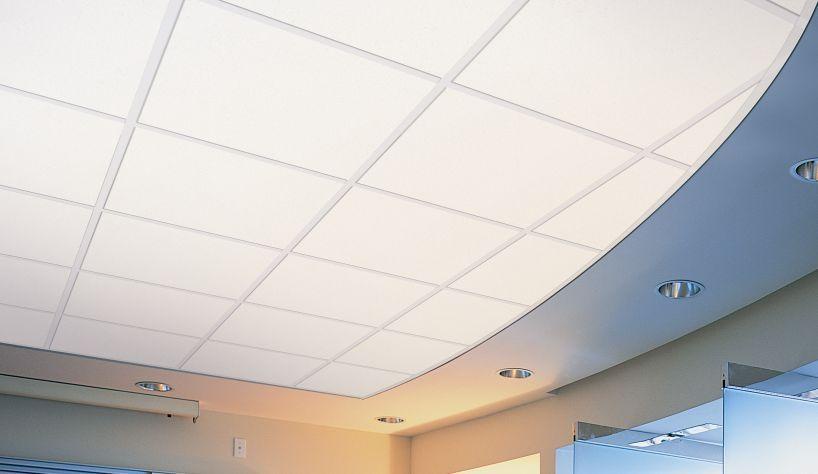Acoustical ceilings play a crucial role in creating environments with optimal sound quality and comfort. The choice of acoustical ceiling materials significantly influences the acoustics of a space, addressing issues such as sound absorption, reflection, and transmission. In this comprehensive guide, we'll explore various acoustical ceiling materials, their characteristics, and considerations for selecting the right material for your specific needs.
1. Mineral Fiber Ceilings:
Overview:
Mineral fiber ceiling tiles are among the most common and versatile acoustical materials. They are made from mineral wool fibers, typically derived from natural minerals like basalt.
Benefits:
- Sound Absorption: Excellent at absorbing sound, contributing to a quieter environment.
- Fire Resistance: Many mineral fiber materials are fire-resistant.
- Affordability: Generally cost-effective compared to some other acoustical materials.
Applications:
Ideal for offices, classrooms, commercial spaces, and areas where sound control is essential.
2. Metal Ceilings:
Overview:
Metal ceiling panels are available in various designs and finishes, and they offer both aesthetic appeal and acoustical benefits.
Benefits:
- Reflective Properties: Some metal surfaces can reflect sound, contributing to improved acoustics.
- Durability: Metal ceilings are durable and resistant to moisture, making them suitable for various environments.
Applications:
Commonly used in modern and industrial designs for offices, airports, and open spaces.
3. Wooden Ceilings:
Overview:
Wooden acoustical ceiling materials provide a natural and warm aesthetic, contributing to both visual and auditory comfort.
Benefits:
- Aesthetic Appeal: Wooden ceilings add warmth and elegance to a space.
- Sound Absorption: Some wood materials offer good sound absorption properties.
Applications:
Popular in auditoriums, theaters, concert halls, and high-end commercial spaces.
4. Fabric-Wrapped Panels:
Overview:
Fabric-wrapped acoustical panels consist of a core material wrapped in an acoustically transparent fabric, providing both sound absorption and design flexibility.
Benefits:
- Design Versatility: Wide range of fabric colors and textures for customization.
- Broad Frequency Absorption: Effective at absorbing sound across various frequencies.
Applications:
Commonly used in conference rooms, studios, home theaters, and spaces with a focus on aesthetics.
5. Glass Fiber Ceilings:
Overview:
Glass fiber acoustical materials are made from fine glass fibers and are known for their lightweight and versatile characteristics.
Benefits:
- Lightweight: Easy to handle and install.
- Durability: Resistant to moisture and humidity.
Applications:
Suitable for environments with specific moisture and humidity requirements, such as swimming pools and bathrooms.
6. Perforated Metal Ceilings:
Overview:
Perforated metal panels are designed with small holes that enhance sound absorption while providing a distinctive visual element.
Benefits:
- Acoustic Performance: Effective in controlling sound reverberation.
- Visual Interest: Unique perforation patterns add visual interest.
Applications:
Ideal for spaces where both acoustics and aesthetics are important, such as modern offices and commercial settings.
7. Plaster Ceilings:
Overview:
Plaster acoustical materials offer a seamless and customizable option, allowing for the creation of curved or sculpted ceiling designs.
Benefits:
- Seamless Integration: Allows for intricate and customized designs.
- Fire Resistance: Plaster is inherently fire-resistant.
Applications:
Commonly used in theaters, auditoriums, and spaces with a need for custom designs.
Considerations for Selecting Acoustical Ceiling Materials:
-
Acoustic Performance Requirements:
- Determine the specific acoustic needs of the space, considering factors such as speech intelligibility, noise reduction, and reverberation control.
-
Aesthetics and Design Intent:
- Choose materials that align with the overall design vision for the space. Consider color, texture, and shape.
-
Budget Constraints:
- Evaluate the cost of materials and installation to ensure they align with the project budget.
-
Environmental Considerations:
- Consider eco-friendly and sustainable options if environmental impact is a priority.
-
Maintenance and Durability:
- Assess the maintenance requirements and durability of the materials, especially in high-traffic or specialized environments.
-
Installation Complexity:
- Evaluate the complexity of installation and whether it aligns with the project timeline and available resources.
-
Building Codes and Regulations:
- Ensure that selected materials comply with local building codes and regulations, especially regarding fire resistance and safety standards.
-
Integration with Other Systems:
- Consider how acoustical ceiling materials will integrate with other systems, such as lighting, HVAC, and sprinklers.
Choosing the right acoustical ceiling materials involves a thoughtful balance between functionality, aesthetics, and practical considerations. By carefully assessing the unique requirements of


No comments yet